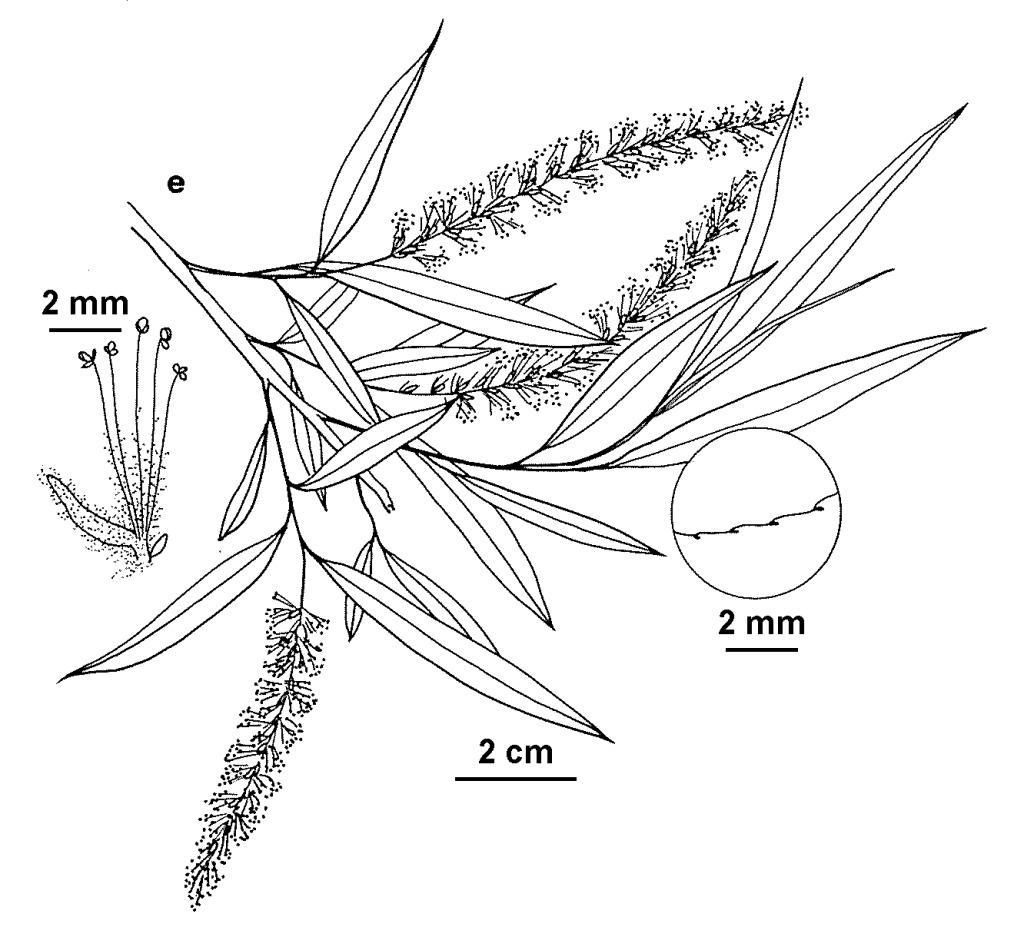Salix nigra
Marshall Black WillowLarge spreading shrub or tree to c. 20 m high or more; trunks 1-several; bark dark brown or blackish-brown, scaly and ultimately deeply fissured; twigs very slender, glabrous, dark reddish-brown, lustrous, moderately brittle at junction; buds glabrous, red-brown, lustrous. Leaves narrow-lanceolate or linear-lanceolate, 4–10 cm long, 0.7–1.7 cm wide, thin-textured, dark green and lustrous above, paler green and dull beneath, soon more or less glabrous; apex long-acuminate; base rounded or cuneate; margins regularly minutely glandular-serrate; stipules (on material seen) minute, auriculate, with glandular swellings, caducous. Male and female plants present; catkins on leafy lateral shoots, cylindric, 5.5–9 cm long; males c. 1.2 cm wide (females not seen at anthesis); flowers widely spaced; catkin scales 2.5–3.5 mm long; stamens 5(–6), male flowers very fragrant; ovary stalked, glabrous; capsules 4.5–5.5 mm long.
VRiv, GipP, NIS. Also naturalised Qld, NSW. Indigenous in east and central North America. Flowers Sep.-Nov.
Introduced for stream stabilization in the 1960s and now abundantly recruiting by seed in the catchments of the Kiewa, Ovens, Deddick and Avon Rivers; probably also reproducing vegetatively. Likely to hybridize with other taxa in the subgenus Salix.
Carr, G.W. (1996). Salix. In: Walsh, N.G.; Entwisle, T.J., Flora of Victoria Vol. 3, Dicotyledons Winteraceae to Myrtaceae, pp. 387–398. Inkata Press, Melbourne.
 Spinning
Spinning

